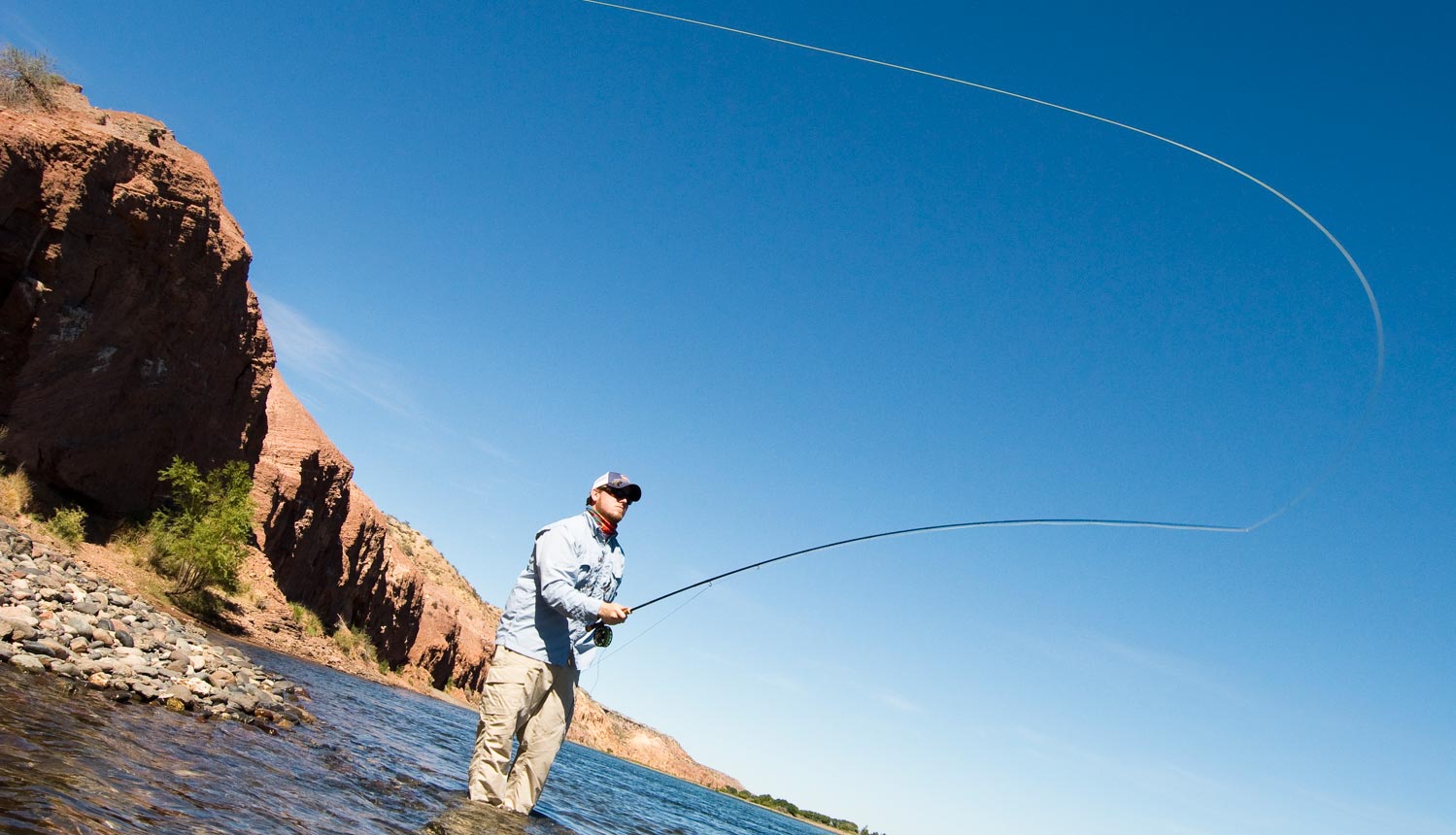By Louis Cahill
An energized fly line is crucial for a good cast and a good presentation.
The act of casting a fly line is really just a matter of transferring energy. We often use the word throw, as in, “Throwing big streamers,” but that isn’t an accurate description of what we’re doing. Hopefully not anyway. Fly lines don’t careen through the air like a golfball. They unroll in tight graceful loops. Right?
It’s the difference in particle motion and wave motion. We can hit a golfball pretty accurately but once that ball leaves the club we are out of the equation. We no longer influence it’s travel to the target. That’s more like casting a spinning rod. A fly cast is more like a jump rope. The rope continues its orbit as long are we hold tight and put energy into it. If we let go of the rope, it falls to the ground.
We talk about slack in fly casting a good bit. When we introduce slack into the line during the cast, it behaves much like that jump rope. There are several bad habits many fly casters share, which create slack and drain the energy from their casts but in this article I’m going to focus on two which are very common and devastating to a good cast.
Before I get into specifics I will give you this tip. As you cast, you should feel a steady tension on the line with your line hand. Hold the line between your thumb and forefinger and make some false casts. The line should stay straight and taut between your line hand and the stripper guide and the pressure should be pretty constant. This is true whether or not you use a double haul. If your line is slapping around and jerking at your line hand, you need to work on your timing.
The two parts of the cast I want to talk about are the ever-important stops in both your forward and back cast. Whether casting forward or back, the stop is what creates the loop. The thing many anglers don’t realize is that once the loop is created, it’s the rod tip which anchors the loop and keeps the energy in the cast. Think of the rod tip as the hand holding that jump rope. If it lets the line go (relaxes the tension) the line loses its energy, just like the jump rope.
Odds are you’ve done this at some point. The first common way it happens is called drift. That’s when you stop your rod, either on your back cast or the forward leg of a false cast, then let the rod tip travel a little further in the direction it was moving. This is most common on the back cast in anglers who are transitioning from gear fishing to fly fishing. Their muscle memory wants to rear back before the forward cast. Drift unloads your rod, steels the energy for your line and deforms your loop, making a good forward cast impossible. Don’t confuse this with the kind of drift used by distance casters.
The even more common mistake fly casters make is dropping their rod tip. This happens on the presentation cast when the angler, either never makes a good stop, or doesn’t hold the rod in the stop position long enough. Ironically, this problem is often a result of watching experienced casters.
You may watch your buddy cast and, especially on a short cast, never notice the stop or the pause which follows. Experienced casters cast by feel and too often abbreviate this part of the cast, even though they keep the tension on the line. If you’re not attune to what you’re looking for you’ll miss it. Remember, the fly cast is symmetrical. The same pause that exists in your back cast and keeps the loop rolling over exists in the presentation cast for the same reason. If the tip of the rod does not anchor the loop, the line will collapse. Your loop will open up, your leader will pile up and you’ll miss your target and your shot at the fish.
Of course you have to drop your rod tip at some point during the presentation. What confuses most new casters is when to drop the tip. What I tell them is to cast to a target a couple of feet above the water. Keep the tip of the rod in the stop position until the loop unrolls fully, then drop the tip of the rod as the line falls to the water, and at the same speed. This way the whole system, line, leader and fly land at the same time.
This is a skill that, once mastered, will make for delicate presentations that land right on target. It will also produce better drifts since the line is not landing on the water before the fly. It’s also a key skill for moving on to more advanced techniques like reach casting and curve casting. Take time to practice on the lawn before your next day on the water. You’ll count the difference in fish.
Louis Cahill Gink & Gasoline www.ginkandgasoline.com hookups@ginkandgasoline.com Sign Up For Our Weekly Newsletter!


Excellent article. That forward stop can be so hard for new casters to realize. Most newbies trying to mimic or more advanced caster don’t really seem to see the subtle stop and pause on the final forward delivery. On the back cast, another detrimental mistake I often see also involves drift. You mentioned the rearward drift that is sometimes so bad that the rod tip touches ground behind the caster. The other type of drift that robs the rod, line and cast of energy is the rod creeping or drifting forward after the stop on the back cast. Many casters effectively stop the rod on the backcast but instead of leaving it there, it slowly creeps forward before they apply acceleration on the forward cast. This robs the rod of effective forward energy simply because the length of the stroke and time to load the rod is reduced. They are essentially starting their forward cast in the middle of the stroke rather than starting to accelerate the rod from the rear stop position. Teaching people to leave the rod in that stopped backcast position and then make a full accelerating stroke greatly increases casting efficiency and fly turnover. Hope that made sense. Thanks for the great site and blog!
After many years of guiding, the most common error I see is not waiting between the back cast and the forward cast. Lefty Kreege says, the larger the arc of the rod the better the cast.